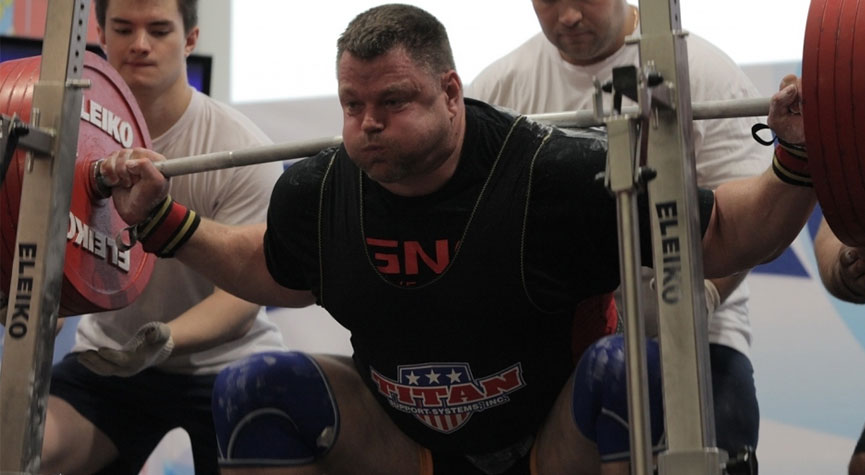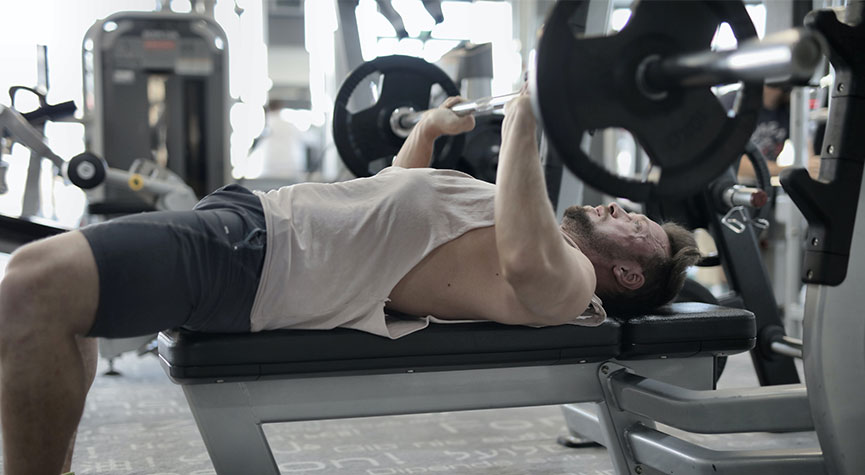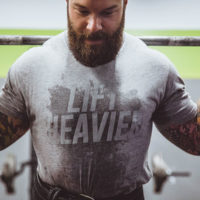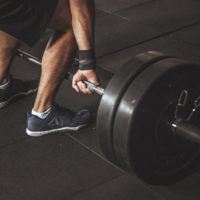Building strength and muscle is important for all types of people. From those wanting to be mobile and independent as they age to those that want to be a competitive athlete.
Hall of Fame Powerlifter Brad Gillingham is here with some tips on how to continue to get stronger.
Identify the Sticking Point
Strength athletes frequently talk about sticking points in a lift. The sticking point refers to a region in the upward range of motion (ROM) of the lift when the bar velocity begins to slow down or stop. This decrease in bar velocity results in the lift becoming more difficult to complete or a failed lift.1 In order to get stronger it is important to figure out ways to strengthen the sticking point. Several studies have been completed to identify sticking points in the squat, bench, and deadlift.
The Squat’s Sticking Point
An analysis of the squat was performed in 1974 at the A.A.U. Senior National Powerlifting Championship.2 The sticking point was identified in the mid position of the upward motion of the lift. All the failed squat attempts in the study stopped near the sticking point. Interestingly, the bar velocity increased in the completed lifts after the sticking point.
The Bench Press Sticking Point
A study involving the bench press was conducted in 1987 on elite male bench pressers in Australia.3 This study indicated that the sticking point occurs 3-5 inches from the chest. During the completion of successful bench press attempts, at 100% maximum load, the bar velocity increased after the sticking point. Whereas diminished bar velocity resulted in failed lifts. Additionally, bar velocity slows in the deceleration zone near the top of the lift.
The Deadlift’s Sticking Point
An analysis of the deadlift was conducted at a United States Powerlifting Federation (USPF) national qualifier.4 The sticking point was identified approximately 2.4 inches below the knee. The study indicated that the bar velocity increased after the sticking point in the completed lifts but slowed in the deceleration zone near lockout.
How to Train the Sticking Point to Get Stronger
The results of these studies emphasize the need to develop a training plan to strengthen the sticking points in your lifts. There are several methods to train sticking points. This training includes compensatory acceleration (speed work), speed work with bands or chains, partial ROM training, isometric training, and working on perfecting technique. 1
Compensatory Acceleration or Speed Work
Strength guru Louie Simmons was a big proponent of utilizing speed work to increase bar speed to blast through sticking points. He was a pioneer in introducing the use of bands, chains and speed work into strength training. I incorporate speed squats, speed bench and speed deadlifts frequently in my workouts. At times I will add variable resistance using bands or chains. The use of bands or chains will help to strengthen the deceleration zone near the top of the lift. Sadly, Louie recently passed away. His contributions to strength training are immeasurable.
Partial Range of Motion Training
For those that have followed my training you know how much emphasis I place on heavy partial ROM training for the squat, bench, and deadlift. The use of power rack partials allows you to lift more weight that you can in a full ROM movement. This results in the ability to strengthen above and below the sticking point. My heaviest deadlift attempts would always slow just below the knee. If I could get the bar over my knees the bar velocity would increase significantly, and I would complete the lift. I have not trained with a lot of isometric movements, but this method can also be effective.
Mastery of Technique
Perfecting technique could be the most important training suggestion from Kompf and Arandjeovic (2016). I often speak about ‘Mastery of Technique’. Every athlete has different physical characteristics. Arm length, leg length, torso length, height and weight are characteristics that are going to influence the leverage the lifter can put on the bar. Therefore, every lifter is going to use a slightly different technique to acquire the most efficient movement. Perfecting your technique is not only going to allow you to blast through those sticking points but will help keep you injury free and allow you to train heavier.
Train Heavy! Blast through those sticking points, and stay strong!
Build Muscle and Get Stronger with myHMB
Training induces stress on the body and breaks down our muscles. Studies have shown myHMB promotes protein synthesis and decreases protein breakdown. These mechanisms of action allow your body to recover faster, improve strength, and build muscle. Learn more.
- Kompf, J., & Arandjelović, O. (2016). Understanding and Overcoming the Sticking Point in Resistance Exercise. Sports Medicine (Auckland, N.Z.), 46(6), 751–762. View abstract.
- McLaughlin, T. M., Dillman, C. J., & Lardner, T. J. (1977). A kinematic model of performance in the parallel squat by champion powerlifters. Medicine and Science in Sports, 9(2), 128-133. View abstract.
- Elliott, B.C., Wilson, G.J., & Kerr, G.K. (1989). A biomechanical analysis of the sticking region in the bench press. Medicine & Science in Sports & Exercise, 21(4). View abstract.
- Hales, M. E., Johnson, B. F., & Johnson, J. T. (2009). Kinematic analysis of the powerlifting style squat and the conventional deadlift during competition: Is there a cross-over effect between lifts? Journal of Strength and Conditioning Research, 23(9), 2574-2580. View abstract.












